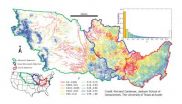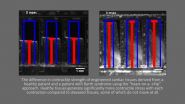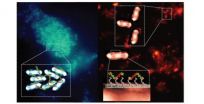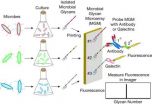(Press-News.org) Community-led sustainable energy projects are not taken seriously enough by the government, according to a new report from the University of East Anglia.
Published today, the report looks at how initiatives such as community-owned solar panels, wind turbines and hydro-electricity generators, as well as energy-saving projects, could make big differences in tackling climate change.
But while a 'Big Society' ethos has formed part of the legislative programme for the coalition government, and the UK Government's new Community Energy Strategy has been a big step forward in terms of supporting the emerging sector, researchers say better policy support is still needed to get grassroots environmental projects off the ground.
The research team from UEA and the University of Sussex looked at 12 small-scale projects which aim to reduce energy consumption in local communities across the UK. These included a solar panel project in Brighton, an eco-home development in Bristol, hydro-electricity generation in Cumbria, and a community island buy-out on the Isle of Gigha in Scotland.
They also carried out interviews with the movers and shakers responsible for getting community projects off the ground.
Lead researcher Dr Gill Seyfang, from UEA's school of Environmental Sciences, said: "The combined pressure of global climate change and threats to energy security mean that we will have to think more radically about sustainable energy. We wanted to know whether energy-saving community projects, run by voluntary organisations, schools, businesses and faith groups, could help.
"We looked at a variety of community energy projects – from community-owned renewable energy generation to energy efficiency projects such as refurbishing a village hall.
"We particularly wanted to know about the kind of knowledge, support and resources these projects needed to really thrive – and compared those needs to what is available to help projects get off the ground.
"What we found is that there is a great deal of community enthusiasm for small scale innovative projects like this, but the resources available are not always enough to really help them flourish.
"What is really needed is flexible and tailored policy support at all levels. While technical advice is available through handbooks and toolkits, there are some really critical support needs in particular - from decision making help to financial models and emotional stamina to keep going in challenging times.
"The Community Energy Strategy has adopted many of our recommendations for supporting mentoring and intermediary organisations, but much more still needs to be done. A huge priority is for government to recognise that many community energy projects are aiming to tackle fuel poverty and develop stronger communities, as well as generating or saving energy. Evaluation and performance monitoring really needs to value these different kinds of results, and not simply focus on the amounts of energy produced.
"Community energy has a part to play in a sustainable energy future for the UK, but demands joined-up policy support, spanning community development, social inclusion, regeneration, energy and climate change."
INFORMATION:
This research was funded by the Engineering and Physical Sciences Research Council (EPSRC) and EDF Energy.
'A grassroots sustainable energy niche? Reflections on community energy in the UK' is published in the journal Environmental Innovation and Societal Transitions on Monday, May 12.
Green-energy community projects need better government backing
2014-05-12
ELSE PRESS RELEASES FROM THIS DATE:
Atlas shows how genes affect our metabolism
2014-05-11
In the most comprehensive exploration of the association between genetic variation and human metabolism, researchers have provided unprecedented insights into how genetic variants influence complex disease and drug response through metabolic pathways.
The team has linked 145 genetic regions with more than 400 molecules involved in human metabolism in human blood. This atlas of genetic associations with metabolism provides many new opportunities to understand the molecular pathways underlying associations with common, complex diseases.
Metabolic molecules, known as metabolites, ...
Flexible supercapacitor raises bar for volumetric energy density
2014-05-11
Scientists have taken a large step toward making a fiber-like energy storage device that can be woven into clothing and power wearable medical monitors, communications equipment or other small electronics.
The device is a supercapacitor—a cousin to the battery. This one packs an interconnected network of graphene and carbon nanotubes so tightly that it stores energy comparable to some thin-film lithium batteries—an area where batteries have traditionally held a large advantage.
The product's developers, engineers and scientists at Nanyang Technological University (NTU) ...
Hydrologists find Mississippi River network's buffering system for nitrates is overwhelmed
2014-05-11
AUSTIN, Texas – A new method of measuring the interaction of surface water and groundwater along the length of the Mississippi River network adds fresh evidence that the network's natural ability to chemically filter out nitrates is being overwhelmed.
The research by hydrogeologists at The University of Texas at Austin, which appears in the May 11 edition of the journal Nature Geoscience, shows for the first time that virtually every drop of water coursing through 311,000 miles (500,000 kilometers) of waterways in the Mississippi River network goes through a natural ...
Patient stem cells used to make 'heart disease-on-a-chip'
2014-05-11
Cambridge, MA—Harvard scientists have merged stem cell and 'organ-on-a-chip' technologies to grow, for the first time, functioning human heart tissue carrying an inherited cardiovascular disease. The research appears to be a big step forward for personalized medicine, as it is working proof that a chunk of tissue containing a patient's specific genetic disorder can be replicated in the laboratory.
The work, published in Nature Medicine, is the result of a collaborative effort bringing together scientists from the Harvard Stem Cell Institute, the Wyss Institute for Biologically ...
Ocean winds keep Antarctica cold, Australia dry
2014-05-11
VIDEO:
Dr. Nerlie Abram, from the Australian National University, explains why ocean winds have stopped Antarctica from warming as much as other continents. Her research also explains droughts in Southern Australia.
Click here for more information.
New Australian National University-led research has explained why Antarctica is not warming as much as other continents, and why southern Australia is recording more droughts.
Researchers have found rising levels of carbon dioxide ...
Hijacking bacteria's natural defences to trap and reveal pathogens
2014-05-11
The breakthrough, published in the journal Nature Materials, could offer an easier way of detecting pathogenic bacteria outside of a clinical setting and could be particularly important for the developing world, where access to more sophisticated laboratory techniques is often limited.
The research was led by Professor Cameron Alexander, Head of the Division of Drug Delivery and Tissue Engineering and EPSRC Leadership Fellow in the University's School of Pharmacy, building on work by PhD student Peter Magennis. Professor Alexander said: "Essentially, we have hijacked ...
UGA research examines fate of methane following the Deepwater Horizon spill
2014-05-11
Athens, Ga. – The 2010 Deepwater Horizon blowout discharged roughly five million gallons of oil and up to 500,000 tons of natural gas into Gulf of Mexico offshore waters over a period of 84 days. In the face of a seemingly insurmountable cleanup effort, many were relieved by reports following the disaster that naturally-occurring microbes had consumed much of the gas and oil.
Now, a team of researchers led by University of Georgia marine scientists have published a paper in the journal Nature Geoscience that questions this conclusion and provides evidence that microbes ...
Galectins direct immunity against bacteria that employ camouflage
2014-05-11
Our bodies produce a family of proteins that recognize and kill bacteria whose carbohydrate coatings resemble those of our own cells too closely, scientists have discovered.
Called galectins, these proteins recognize carbohydrates from a broad range of disease-causing bacteria, and could potentially be deployed as antibiotics to treat certain infections. The results are scheduled for publication in Nature Chemical Biology.
Researchers at Emory University School of Medicine made the discovery with the aid of glass slides coated with an array of over 300 different glycans ...
Study finds patients AFib at higher risk of dementia when meds out of range
2014-05-10
A new study by researchers at the Intermountain Medical Center Heart Institute in Salt Lake City has found that atrial fibrillation patients who are on blood thinning medications are at higher risk of developing dementia if their doses are not in the optimal recommended range.
The study of more than 2,600 AFib patients found they are significantly more likely to develop dementia when using medicines to prevent blood clots, such as warfarin, when their dosing is too high or too low for an extended period of time.
Findings from the study will be presented at the 2014 ...
Bee biodiversity boosts crop yields
2014-05-10
Research from North Carolina State University shows that blueberries produce more seeds and larger berries if they are visited by more diverse bee species, allowing farmers to harvest significantly more pounds of fruit per acre.
"We wanted to understand the functional role of diversity," says Dr. Hannah Burrack, an associate professor of entomology at NC State and co-author of a paper on the research. "And we found that there is a quantifiable benefit of having a lot of different types of bees pollinating a crop."
The researchers looked at blueberries in North Carolina ...






